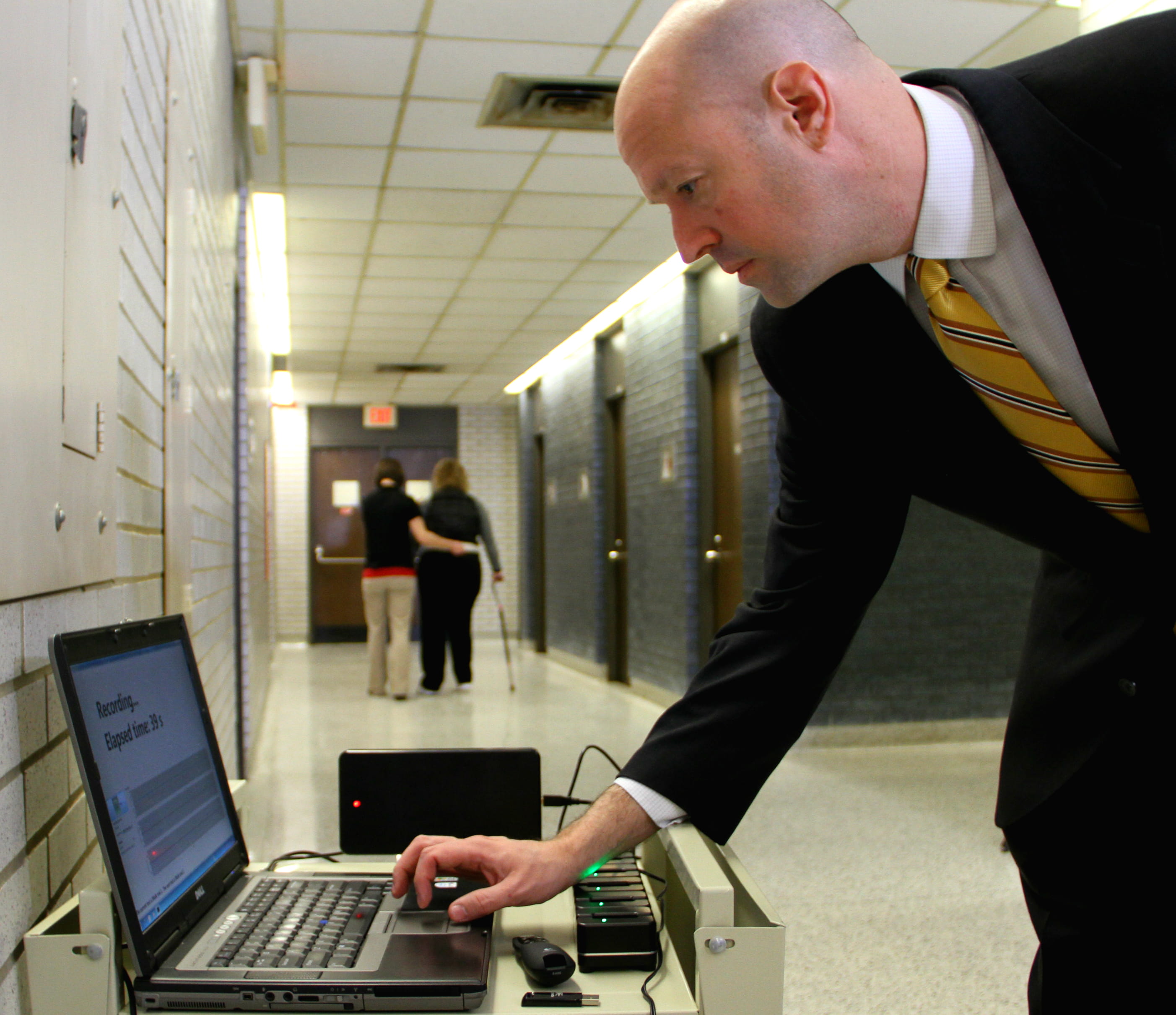April 3, 2013

COLUMBUS, Ohio – While many of us take the technology packed into smart phones and tablets for granted, researchers that specialize in rehabilitation are inspired by it, using it to evaluate the progress of stroke survivors who are learning to walk again.
A team at The Ohio State University Wexner Medical Center is applying two well-tested applications in brand new ways in an attempt to improve mobility in people who have suffered a stroke.
“In our study, we’re measuring how well people walk before and after intervention with a new system of wireless sensors that use the same technology found in cell phones and tablets,” said Stephen Page, PhD, an associate professor of occupational therapy at Ohio State’s School of Health and Rehabilitation Sciences. “This is the first time this approach has been used.”
The team is using wireless sensors that contain tiny accelerometers, which measure the force of acceleration and are used in smart phones and tablets to sense movement and help adjust the image on the screen. Six sensors are placed on the study participant’s arms, legs and chest. As the person walks, or performs other functional activities, the sensors relate information to each other and back to a computer that charts how and where the person is moving.
“The nice thing about this technology is we can measure their balance and walking anywhere,” said Page. “We can have someone go up steps or perform household tasks, such as in a kitchen. Anywhere that walking or balance is important is a place we can capture how well the person is moving.”
Page is using this technology to evaluate progress in a study that is testing a new type of rehabilitation intervention for stroke survivors. For the first time, Page’s team is combining electrical muscle stimulation, which has been used to improve muscle function for decades, with active stepping motion on a recumbent bicycle. The goal of the study is to determine whether the combination of active motion and electrical stimulation provides added benefit for the patient through neuroplasticity, or retraining the brain.
“The stepping motion on a recumbent bike uses similar parts of the brain as when a person is actually walking,” said Page. “We are trying to recruit new areas of the brain, around the stroke-damaged areas, which is called ‘neuroplasticity,’ and get those areas to hopefully control walking again.”
The first part of this study will examine 10 people who experienced a stroke within a year to 18 months prior to study enrollment and have limited ability to walk. Over the course of 10 weeks, half of the study participants will receive electrical stimulation on their legs while biking, while the other half receives placebo treatment while biking.
Page says this study challenges the notion among many physicians and rehabilitation experts that stroke survivors reach a recovery plateau within a year after their stroke.
“We have shown in more than a decade of studies that this belief is not true, and we expect to show that with this intervention. Stroke survivors can continue to get better and see meaningful gains years after their stroke,” said Page.
For more information about this and other stroke rehabilitation studies, call 614-292-5490 or email Stephen.Page@osumc.edu.
For broadcast quality video and high resolution photos, go to: http://bit.ly/WJgKfo
Contact: Marti Leitch, Medical Center Public Affairs and Media Relations, 614-293-3737 or Marti.Leitch@osumc.edu

